Losing all of your customers to get into Y Combinator

A Spanish version of this story can be read here.
Parrot’s origin wasn’t glamorous like Travis Kalanick from Uber wanting to hail a taxi in Paris, or Brian Chesky from Airbnb renting out his room to pay the rent.
Parrot’s beginning was a shit show. Overnight, we went from being profitable with 300 customers to a company with 0 revenue, 20 employees, and salaries we couldn’t pay. I’d been at Parrot for less than a month when it happened. In fact, I hadn’t officially started.
What happened?
COVID.
In January 2020, Roberto, today my co-founder, reached out to me because he had a crystal-clear vision for the future of restaurants in LatAm: their reliance on technology would grow rapidly, creating opportunities to be more than just a point-of-sale. He understood this better than anyone in Mexico because he’d spent the last 7 years as Founder & CEO of S3 Software, a POS for restaurants.
I was coming off 6 years of grinding, 4 years at Uber and 2 at Grin Scooters. My last year at Grin was extremely emotionally taxing and I wanted something calmer and more in my control. Roberto, for his part, had been building his company for the last 7 years and he was about to become a first time father in a month.
From the start we agreed on going for moderate growth. S3 had a business model with strong LTV and low churn thanks to a solid product that already had over 300 customers. The plan was for me to join, improve the tech foundation, and raise a modest investment to accelerate growth.
Nothing we ended up doing was modest or calm.
Let’s do this
By late February I told Roberto I was in, but first, I needed at least 3 months to recharge. I left Grin excited to rest and travel.
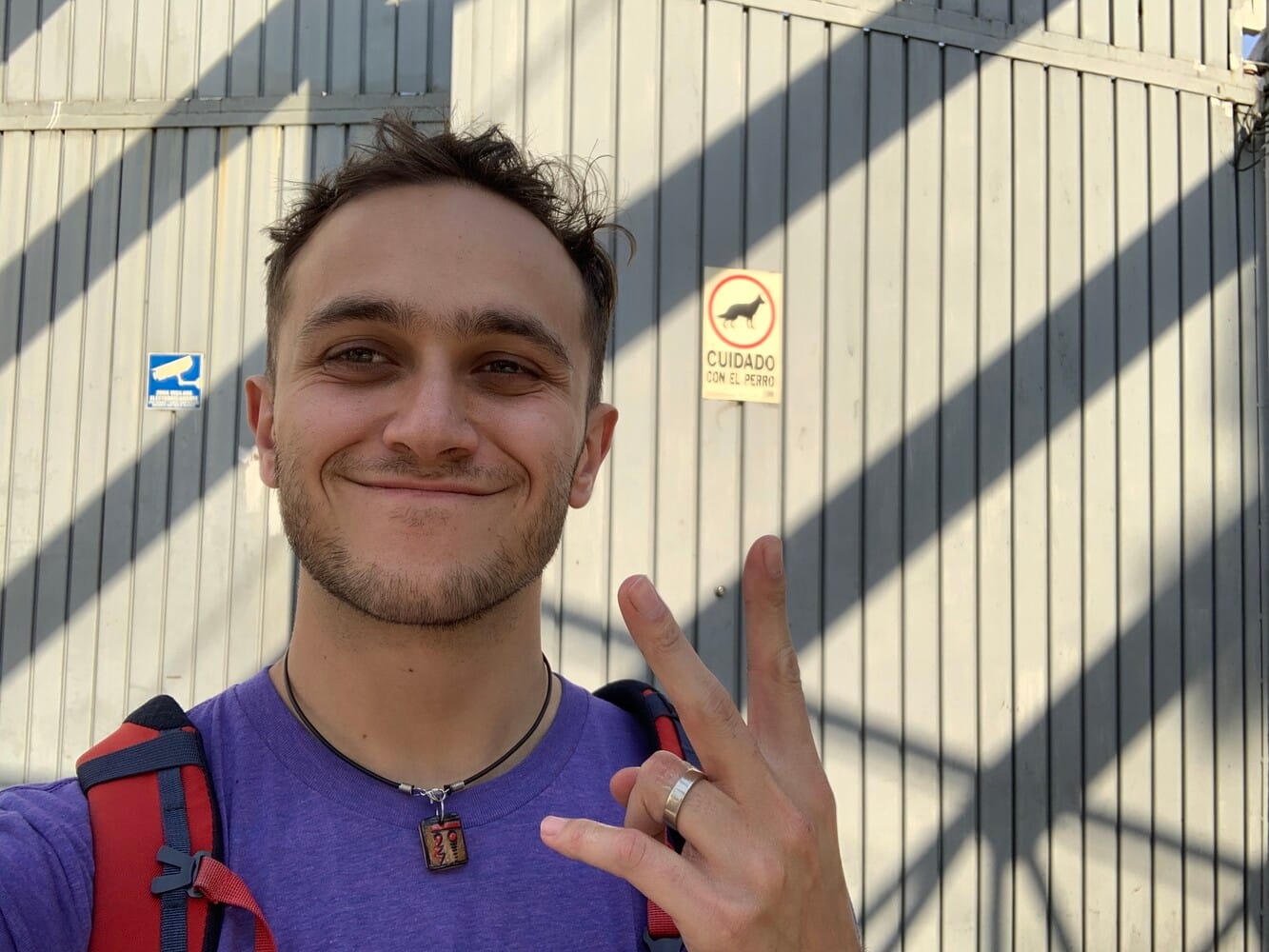
One week after my last day at Grin, all of Mexico shut down due to COVID. I couldn’t travel or disconnect. The lockdown + unemployment started driving me insane.
For the first time in 6 years, I had nothing to do, and my restless nature started eating at me. I didn’t even last 3 weeks before telling Roberto I was ready to start. During those 21 days, restaurants were forced to close, and S3 Software, now Parrot, started sinking.
Raising capital for a terminal startup
I joined Parrot as Co-Founder & CTO, but from day one it no longer was about improving the technology, it was about surviving to the next month. We had 20 employees, 0 revenue, and debts instead of cash. We believed many restaurants would come back once things reopened, but we wouldn’t last until then.
Priority #1 became raising capital. Neither Roberto nor I knew what we were doing, but nothing like a good crisis to learn.
It felt bizarre pitching VCs while burning cash and while our revenues shrank. For a while the pitch strategy was to just talk about the idea of Parrot as a pre-seed, without mentioning S3 or the restaurants that already trusted us. It was all backwards.
The only thing in our favor was that our thesis was accelerating. Every restaurant was being forced to adopt technology immediately. It wasn’t our technology since we didn’t support delivery, but we could build it. If, and only if, we got the capital to stay alive.
The pre-seed
In April, Roberto and I started fundraising not just to save the work of the last 7 years, but to capture the opportunity unfolding in front of us.
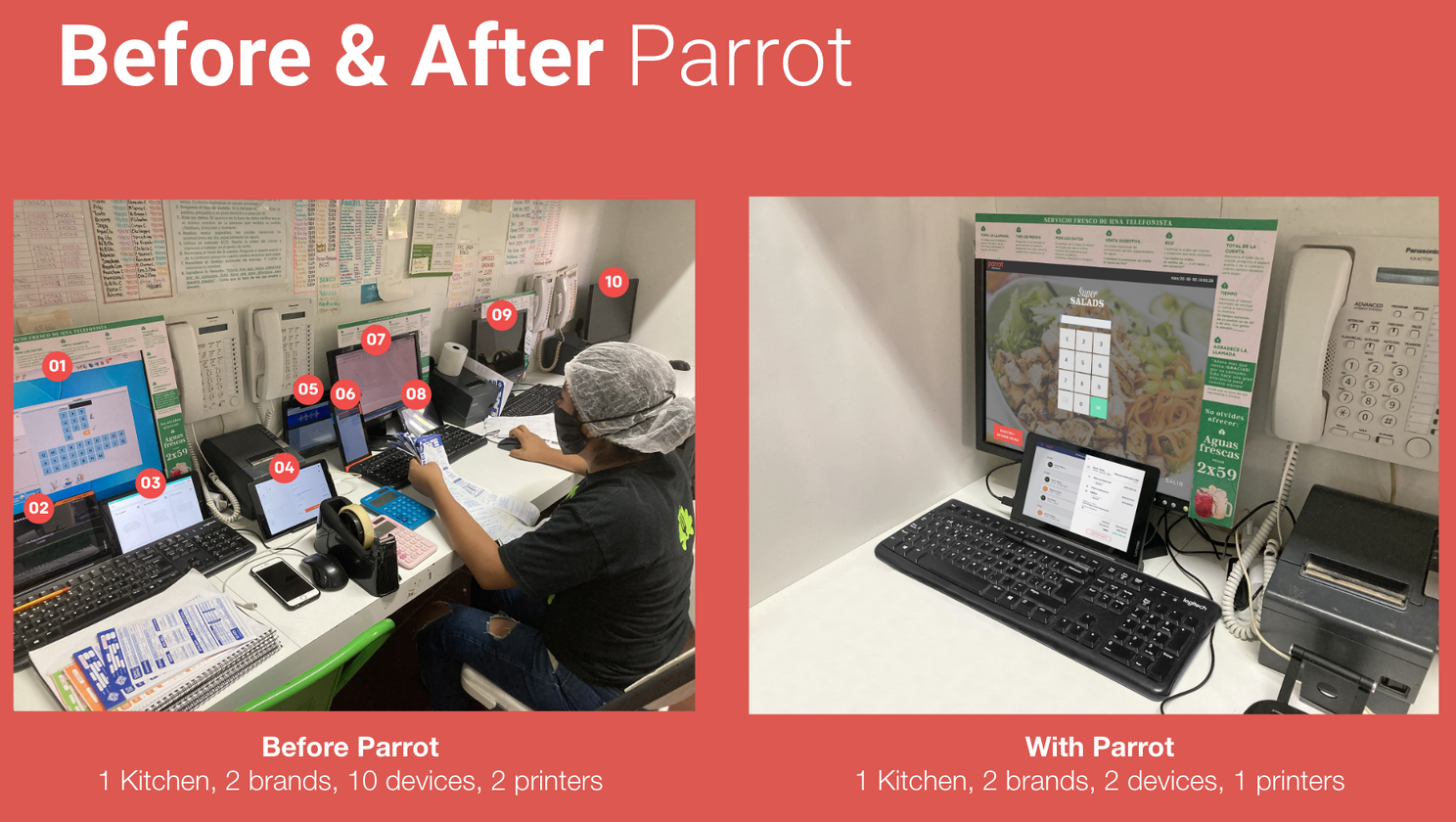
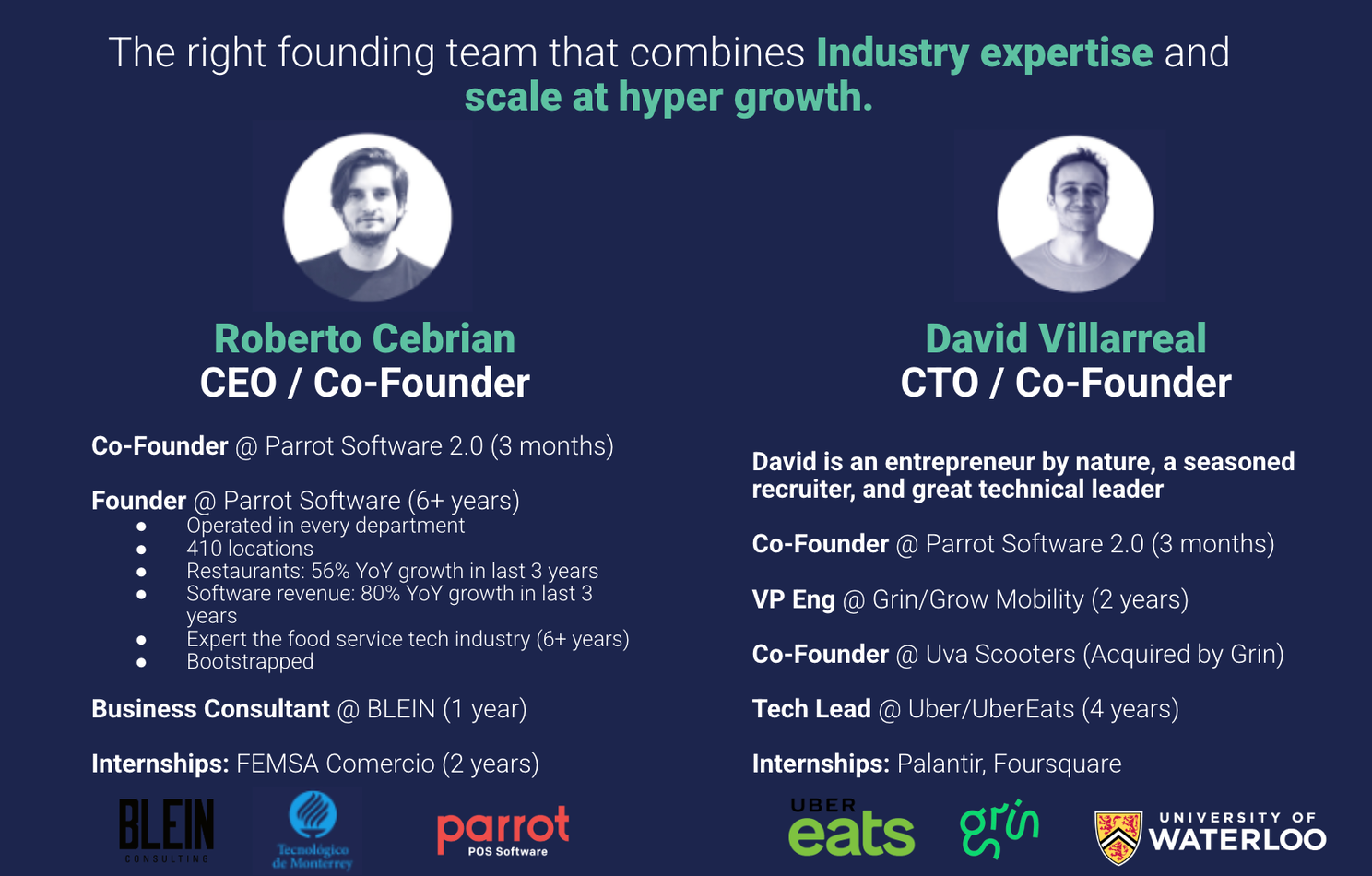
Talking to VCs we quickly realized moderate growth wasn’t an option. If we wanted funding, it meant having the ambition to conquer LatAm.
Roberto and I had a short but clear conversation:
Did we actually want to play that game? Did I want to jump back into that rush I hadn’t even recovered from? Did Roberto want that grind with a 2-month-old at home during lockdown?
Definitely yes.
I didn’t want something calm. That's not how I work. My drive comes from a mix of ambition, excitement, and of course: ego. Roberto for his part was excited to build something big around a crystal clear vision he had.
We updated the deck and kept at it. Within a week we got good traction with a fund called GFC and booked a meeting with a partner; a decision maker.
That week, my anxiety got really bad. Before the meeting with GFC, I went for a run and had to stop because my chest felt tight and I couldn’t breathe well. I did some YouTube breathing exercises to get through the meeting.
It didn’t go well. They didn’t invest.

The breakdown
The next day, I had my first panic attack.
I came to my wife Norma crying, scared, and gasping for air. I cried and cried, and between choking breaths, my body started releasing everything I’d been holding in since childhood: my fears, insecurities, anger, and guilt. If I tried to hold something back, my anxiety would explode and literally force it out. My body wasn’t going to keep anything inside anymore and I had no say in it.
I was in a really bad shape.
For weeks, anxiety stole my appetite and my sleep. I couldn't eat or rest. It felt like my body had third-degree burns and any thought passing through my head would set off a wave of anxiety.
- I had anxiety being awake, but I couldn’t sleep.
- I had anxiety watching Friends.
- I had anxiety playing video games with friends.
- I had anxiety about having anxiety.
After several weeks of this I had a terrifying thought:
“Now I get why people with terminal illnesses prefer to die. I love life, and I know this is temporary, but if this was forever, I wouldn’t want to live anymore.”
I've always been terrified of death and thinking that hit me very hard.
At the same time, every time I let go of something I’d been holding in, I felt better and that feeling became addictive. My body forced me to release everything I never should have kept inside. Out came the real David, the good and the bad. It freed me.
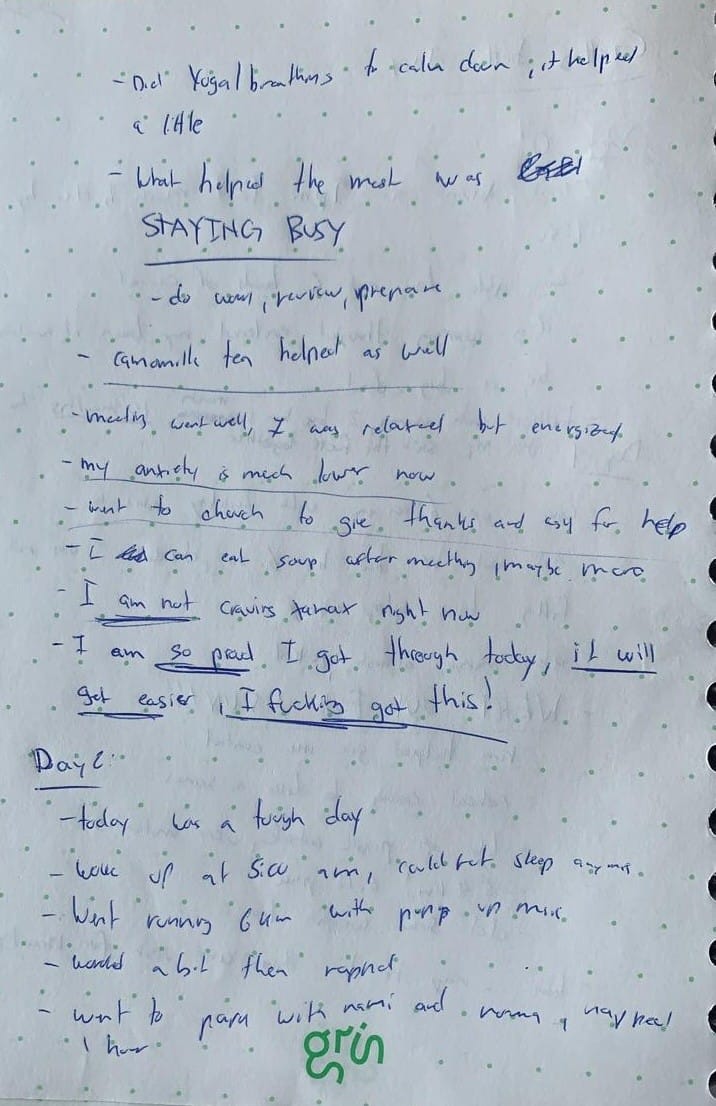
To this day, if I try to bottle something up, the anxiety comes back and my body won’t let me make the same mistake. I’m an open book because I have no other choice.
That was the hardest time of my life, and I got through it thanks to my life partner, my wife, and my best friend: Norma. She stayed by my side painting mandalas, walking with me in the park, or sending me uplifting quotes. Whatever it took to get me through the day. All this while running her own business and taking care of me and our dog Nami.
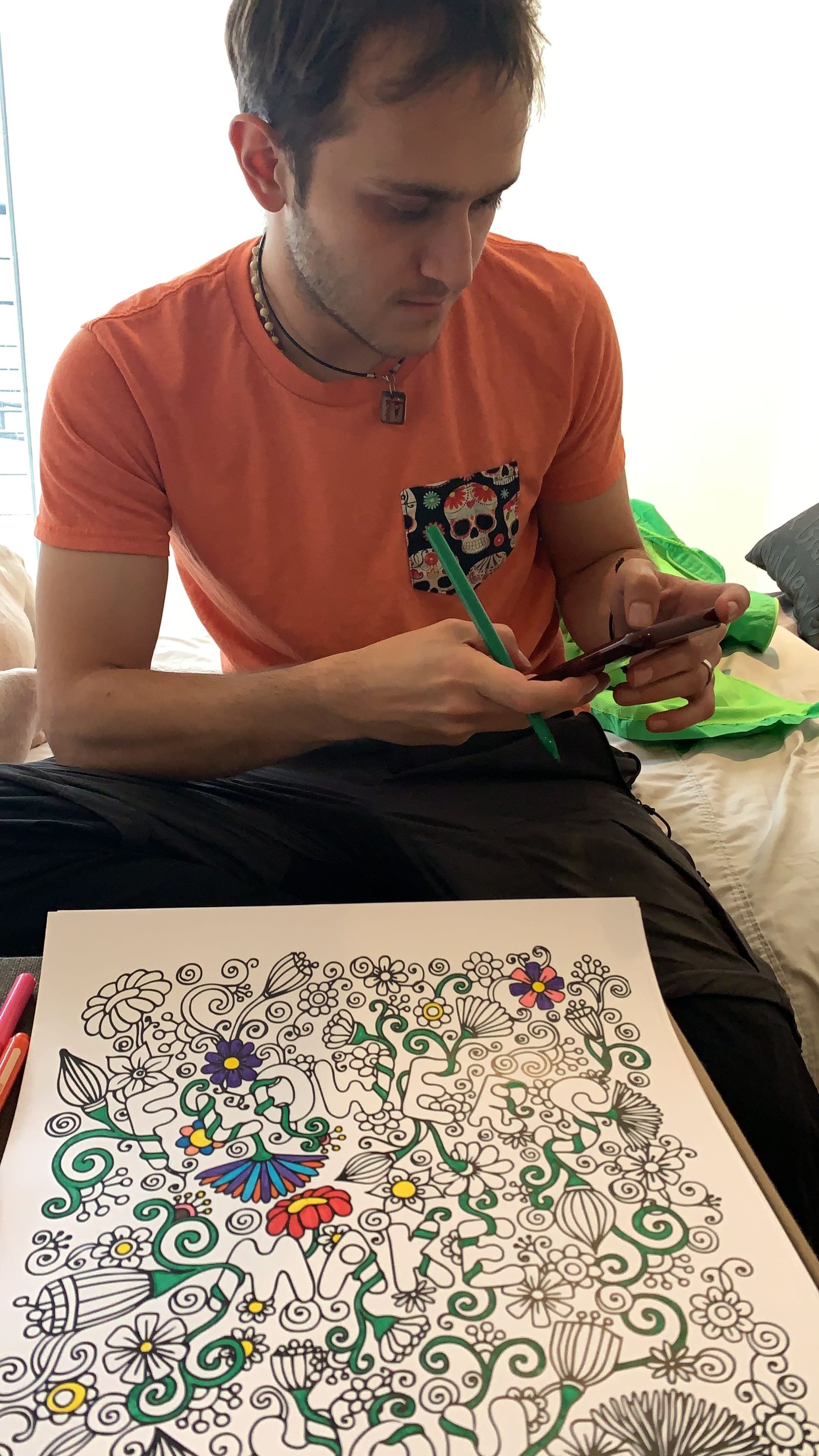
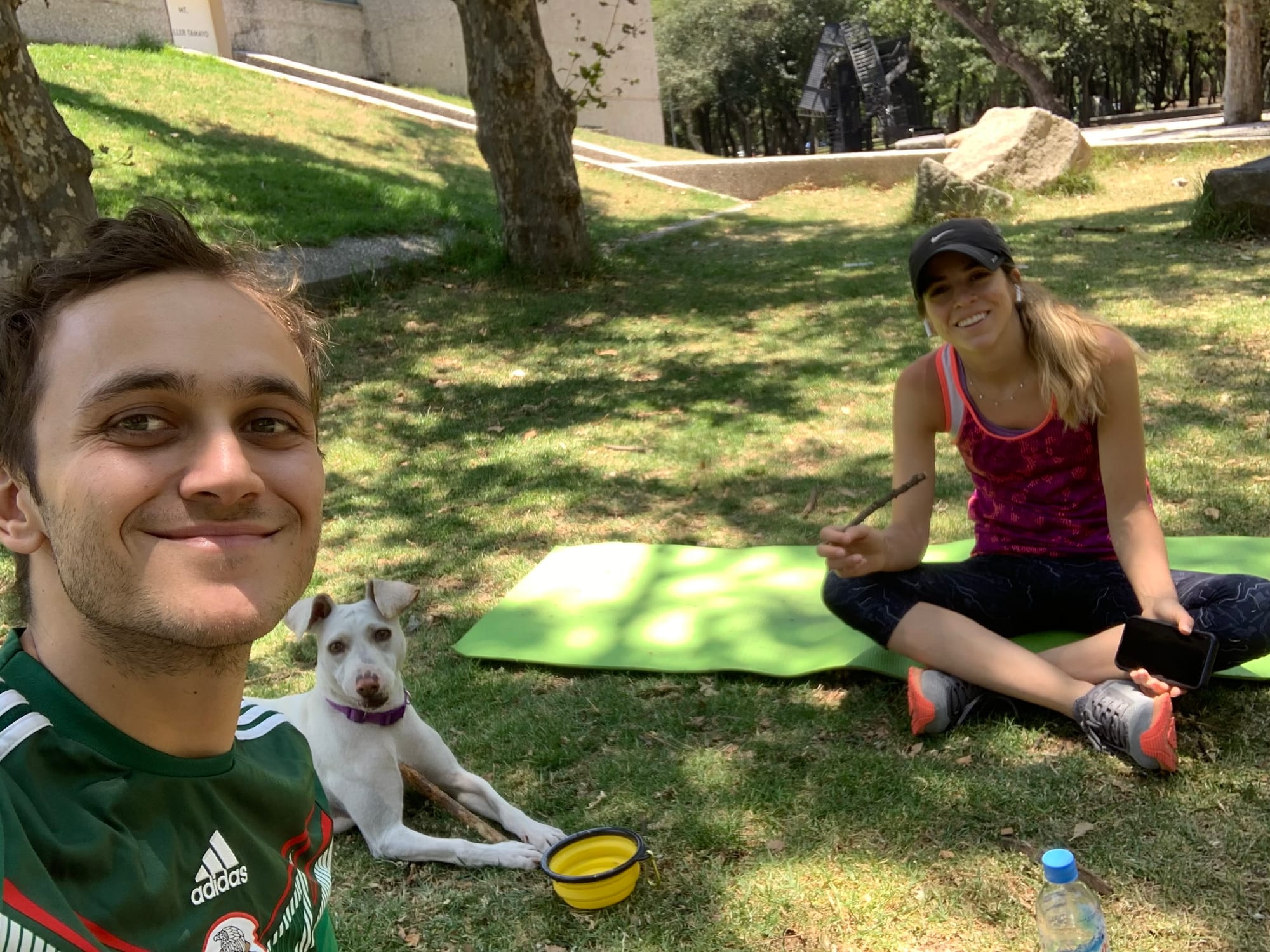
Painting mandalas focused my mind and was one of the few things I could do to calm my anxiety.
Back to chaos
A month later, reality came knocking back. Parrot still needed money. All the while Roberto was operating as CEO in crisis mode, as a new dad, and as a founder raising capital for something brand new.
Norma and I moved to Monterrey to be closer to family and so I could focus on getting better and on Parrot. Back then, the whole company was in Monterrey.
Ironically, getting back into the rush helped calm me down. Having a clear, urgent objective forced me to act instead of overthinking things.
I’ve since understood that anxiety is my best source of energy. If I channel properly, it’s better than five cups of coffee. If I don’t that same anxiety ends up paralyzing me.
Pre-seed, two months of runway
We bought ourselves two months by raising some money from friends and family. I put about 30% of my savings into that round. It was a terrible financial decision, but an incredibly easy one to make.
I’d love to say it was because I was certain we’d crush it or that this capital would get us to stability, but it wasn’t. It was pure survival instinct, and my usual mix of stubbornness, hardheadedness, and dangerously irrational optimism.
So much so that I had already recruited two of the best people from Grin to join Parrot and they where starting in June (yes, I told them even though we didn’t have a cent yet).
YC
Several founders suggested we apply to Y Combinator. We didn’t see the point. The deadline had passed a month ago, but they convinced us telling us that our pitch would be sharpened just by working on the application.
After a lot of feedback, we sent our application with zero expectations. We were late, shrinking, and burning money. A week later, they invited us to interview.
The video for the YC application with Tulz and Jira, Parrot’s cats, in the background ❤️
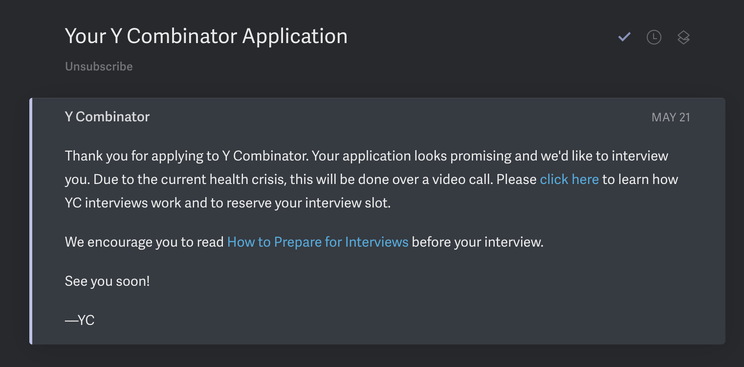
“Now what?” We felt like the chihuahua that finally catches its tail after years of chasing it and has no idea what to do next. The interview was in a week. But what would we show them? Negative growth?
A founder gave us an idea: Get traction, anything. If we were saying restaurants needed technology now, how could we prove it?
It was Friday. Restaurants in Monterrey were reopening Monday. Our interview was Wednesday. We had 5 days.
We came up with something: one requirement for reopening restaurants was having digital menus. We decided to help restaurants digitize their menus with a QR code. My engineer brain screamed, “Come on, it’s literally a QR code that points to a Google Drive!” Basically, it was a silly idea.
But in the chaos of COVID restaurateurs were trying everything and we thought we could make it so simple that it would add real value. Also, we had no other ideas. Worth a shot 🤷.
That weekend we built and launched covid.menu. Upload a PDF, click a button, and get a QR to stick in your restaurant. We marketed it by spamming WhatsApp and hunting for press. The mayor of San Pedro even posted a story about digital menus!
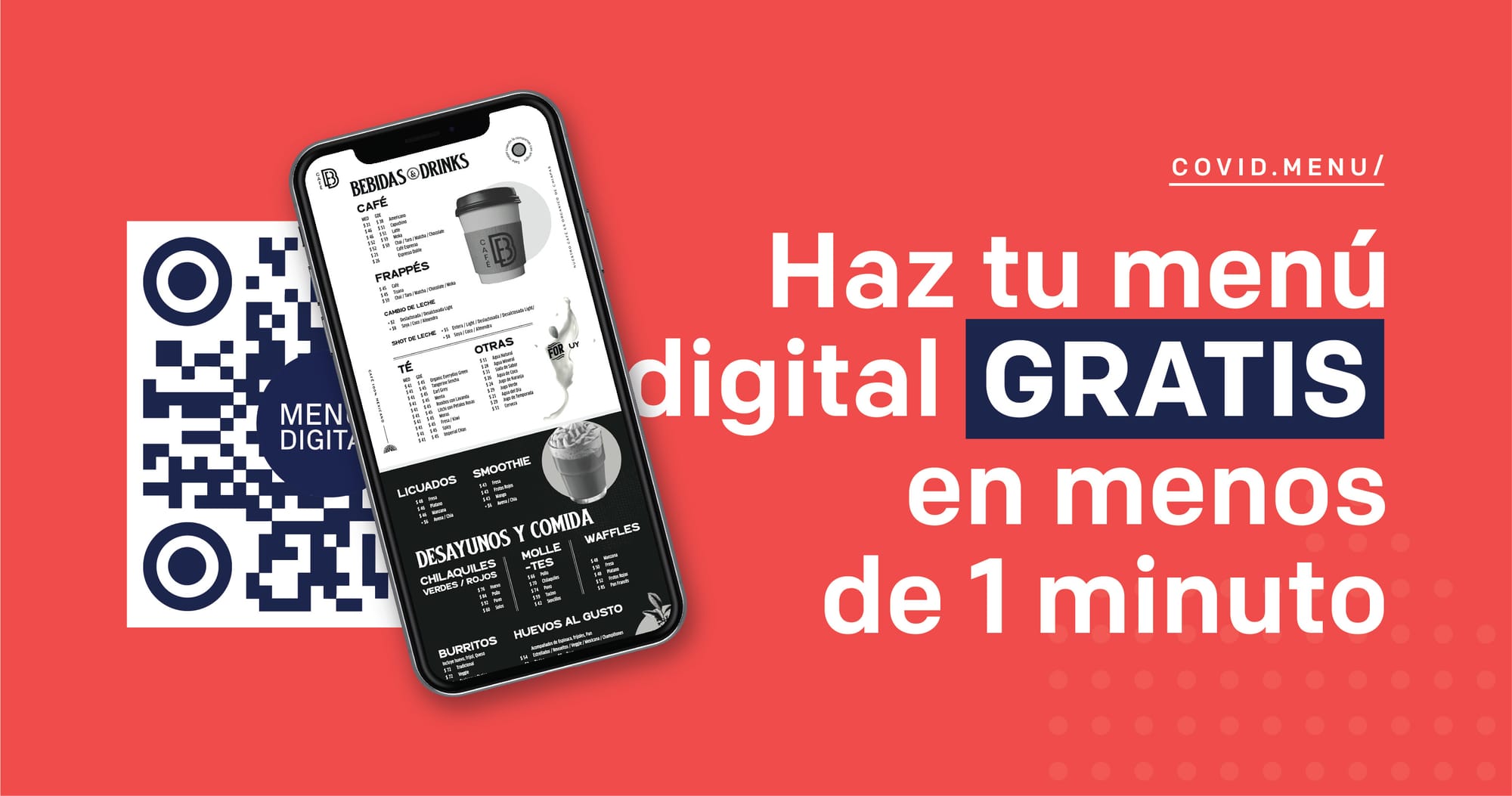
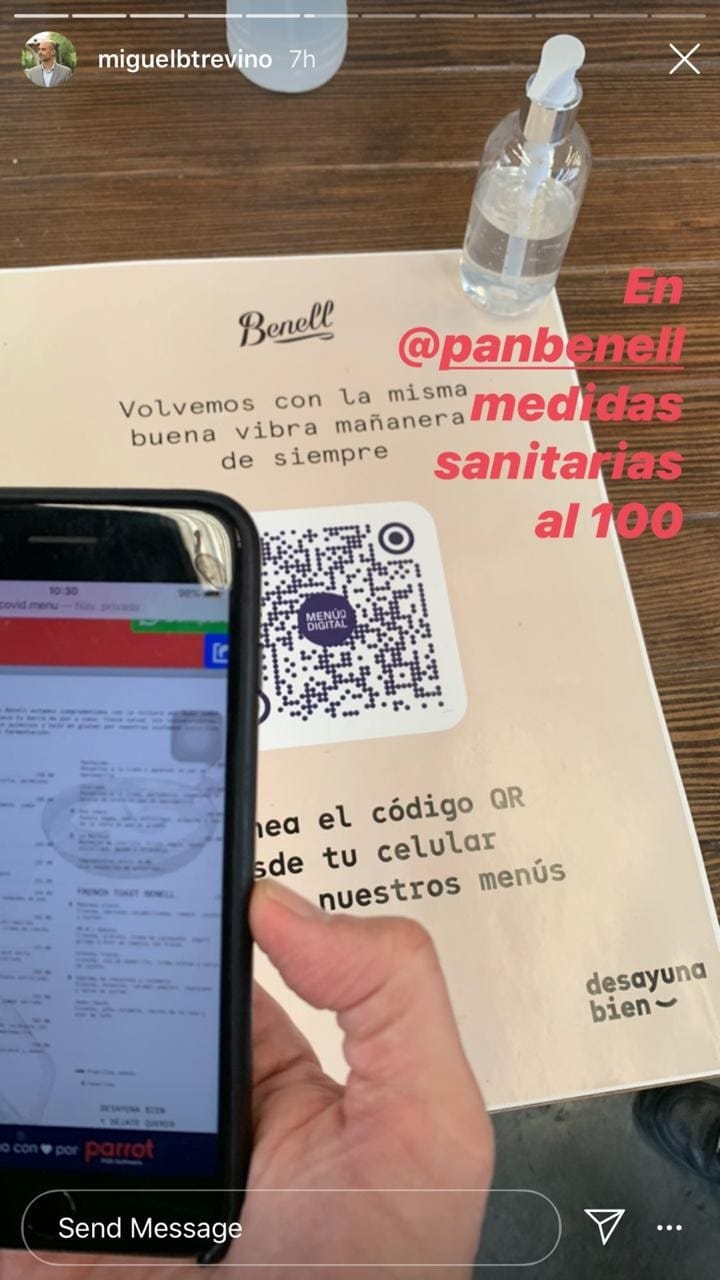
Instagram story from the mayor of San Pedro about covid.menu
...and it worked? By Wednesday, over 100 restaurants were using our menus with thousands of total visits. We knew digital menus weren’t a business, it was free and just a stunt to show we could get traction.
The interview
On Monday before the interview, several LatAm founders who’d gone through YC helped us with mock interviews: 10 minutes of rapid-fire Q&A. It was incredibly useful. We refined our story and answers.
The key takeaways:
- Know your 3 strongest points. For us: team, opportunity, traction.
- Use those points to answer any question.
- Keep answers short: 1–2 sentences, 10 seconds max. Direct, no fluff.
Thank you Pam, Tiago, Freddy, and Jon for your time. You really made a difference and I try to pay it forward as much as I can.
Wednesday came. We prepped our setup, backup internet, and good sound. Tulz and Jira (Parrot’s cats) were wandering around and we asked them to keep quiet for 10 minutes.
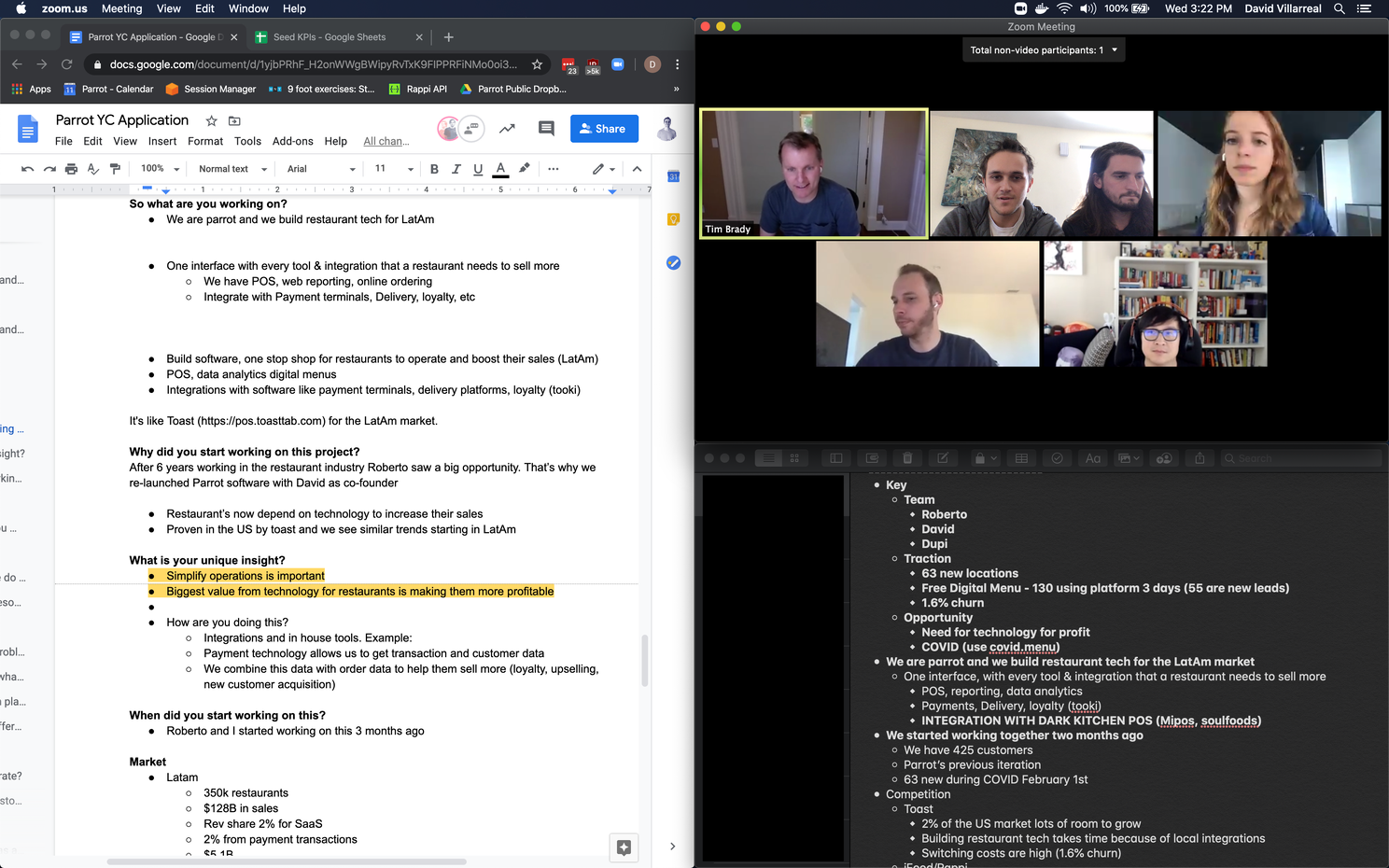
It was so quick. It felt like 3 minutes. We finished unsure on what to think. It was 1pm and we would know that same day. Via phone call if it was a yes and email if it was a no.
Nearly 12 hours later, at 10:44 pm, my phone rang with a California area code. It was Kevin Lin, co-founder of Twitch and now a visiting partner at YC. Parrot had gotten into Y Combinator!
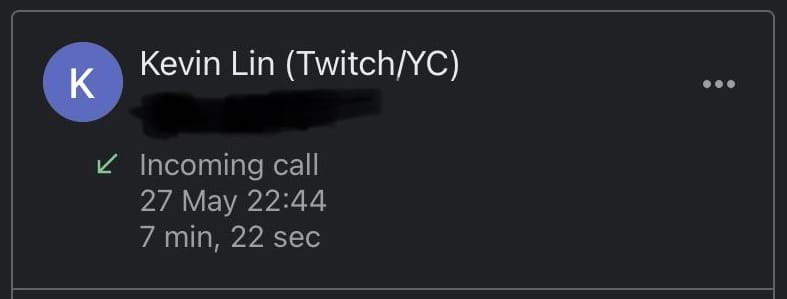
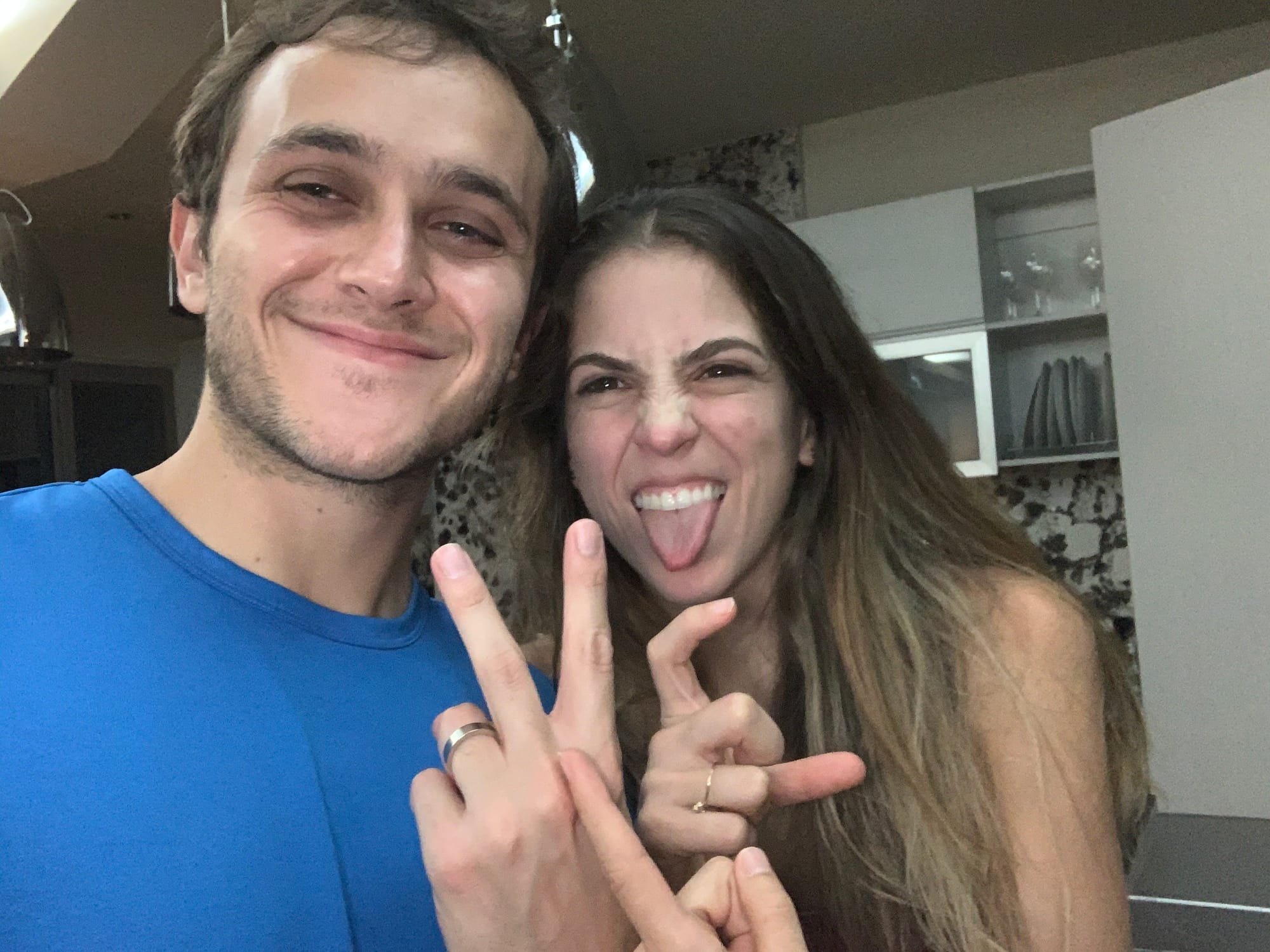
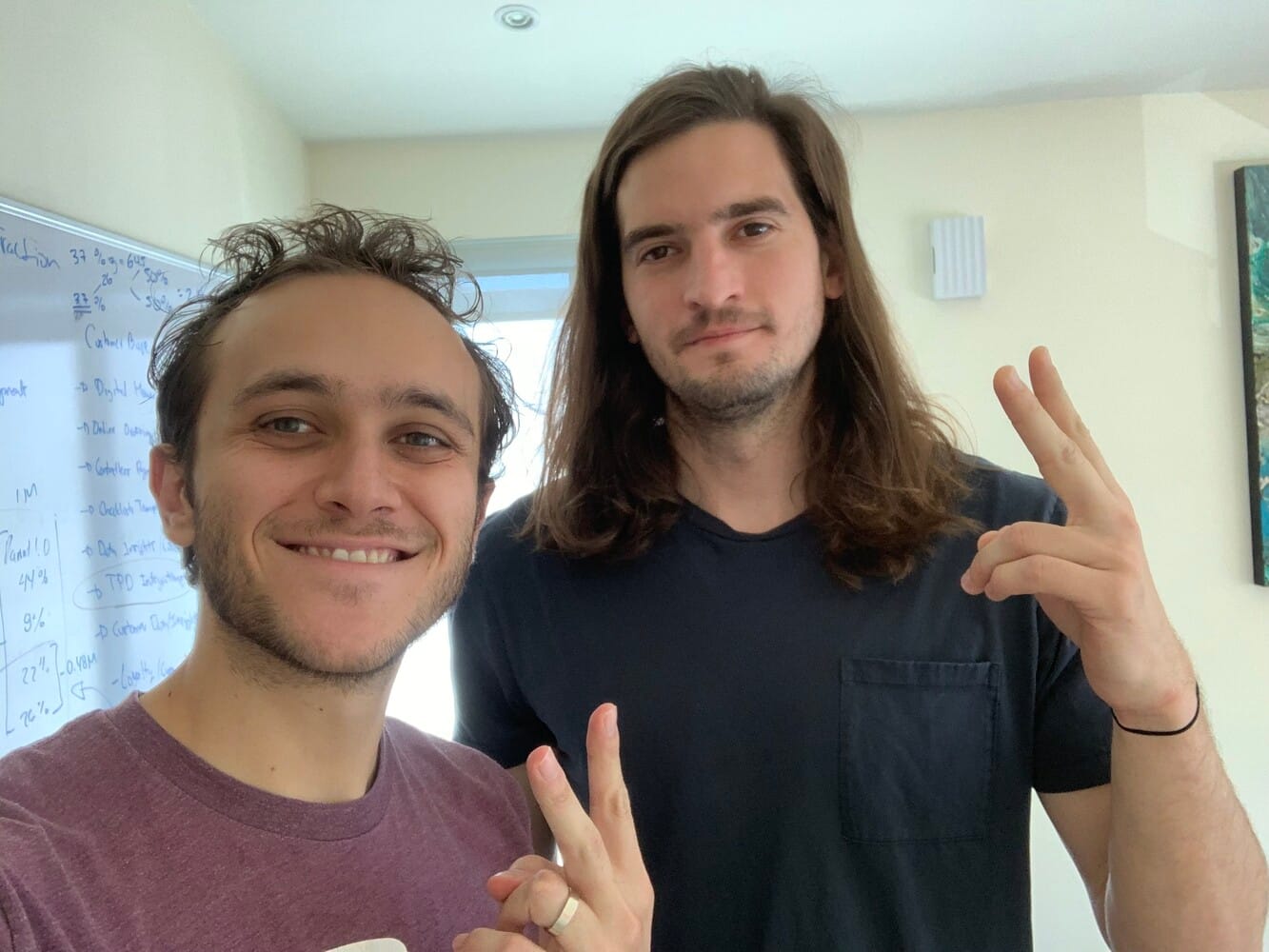
11 pm, minutes after the call, exhausted but HAPPY! And the next day with Bob.
It didn't get easier after that and I'll write about that some other time.
Thank you for reading me.